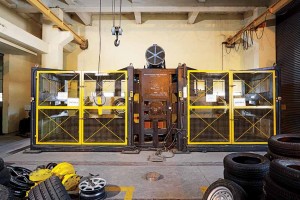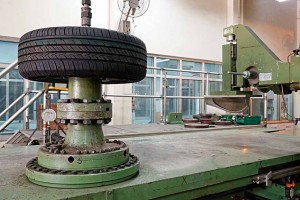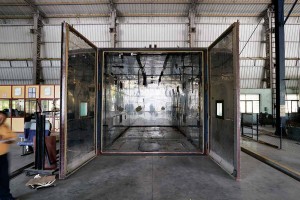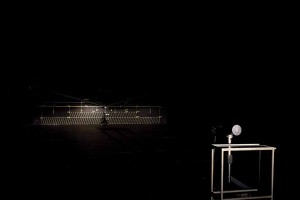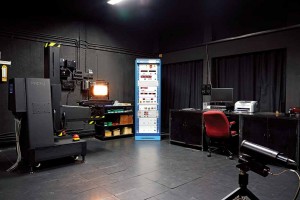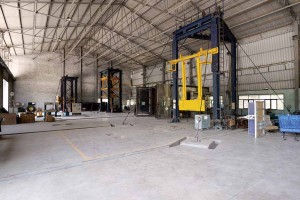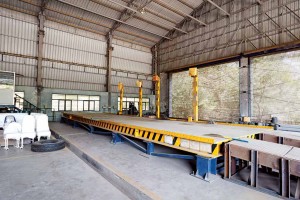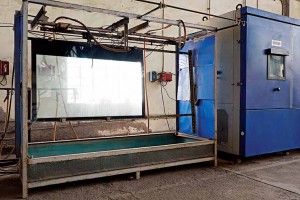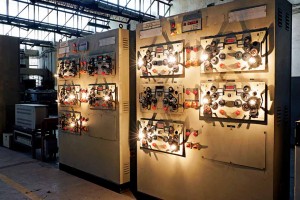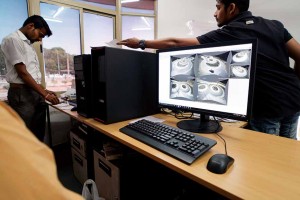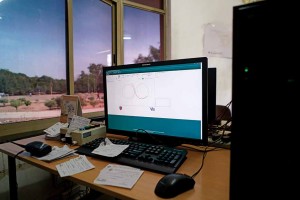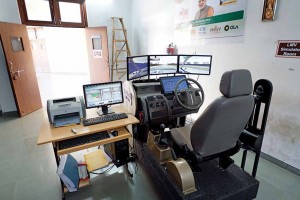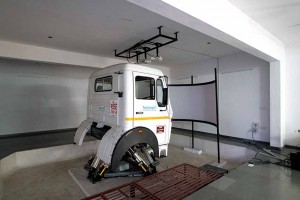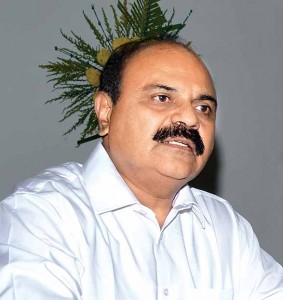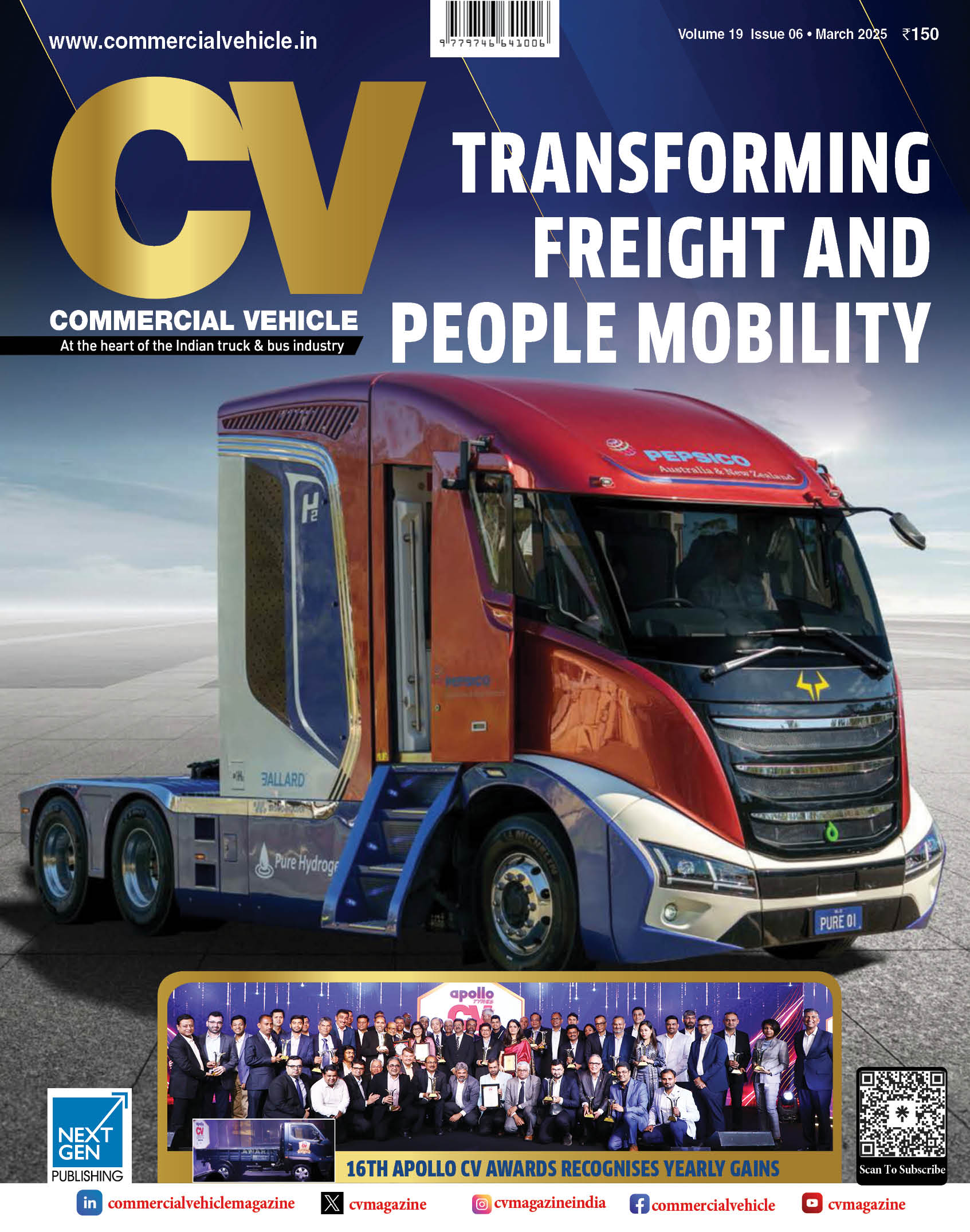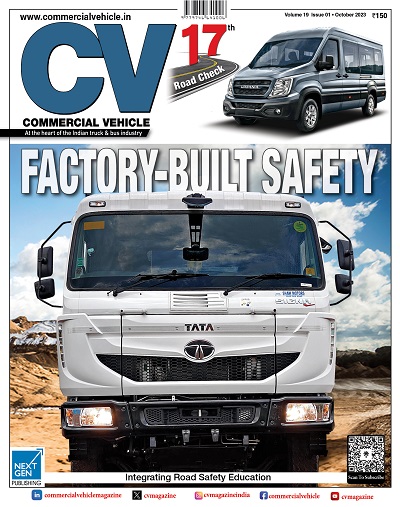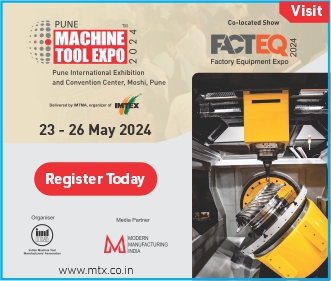The Pune-based Central Institute of Road Transport (CIRT) is playing an important role in elevating safety, performance and transport efficiency in India.
Story by: Bhushan Mhapralkar
Photos: Saurabh Botre
The driving license tests in the Pune region are carried out at a modern testing facility called the Institute of Driving Training and Research (IDTR). Best and the most fool proof testing facility in India ever, IDTR is located over a 15 acres portion of the sprawling 90 acres campus of the Central Institute of Road Transport (CIRT), which was established in 1967 as a joint initiative between the Association of State Road Transport Undertakings (ASRTU) & the Ministry of Road Transport & Highways (MoRTH), Government of India. A result of significant research carried across two generations of driver licensing procedures – proximity sensor-based and RFID-based, IDTR includes 15 different tracks – the shape of ‘eight’, ‘H’ and ‘S’, and a centre elevation. Developed by CIRT under a mandate from MoRTH, IDTR carries out camera-based video analytics employing a software developed specifically for the task. There is no manual intervention at all. Not stopping at that, CIRT is also helping various government agencies to replicate driving licensing infrastructure across India on the same lines. With Tata Motors having played a role in the setting up of IDTR, the facility includes heavy-duty vehicle and light motor vehicle simulators. IDTR also has cutaways of important aggregates like engines, transmissions, axles, turbochargers, etc., as part of the theoretical training it imparts.
Before the IDTR gained shape, an automated vehicle inspection centre went on stream in June last year at Nashik. CIRT was instrumental in developing it too. Sans manual intervention, the centre carries out vehicle fitness checks for emission, speed calibration, brakes, suspension and wheel alignment. As MoRTH and various state governments look at replicating such facilities, CIRT is helping them. Says Dr. R B Saner-Patil, Director, CIRT, “The road map of CIRT is very progressive. It has achieved excellent footprint in consultancy, training, component testing, and more, as part of the Central Motor Vehicle Rules (CMVR). CIRT has played a pivotal role, and is continuing to do so”. Mentions Prashant Kakade, Manager & Co-Ordinator MDC, CIRT, that norms are strictly adhered to. “Stress is on being neutral,” he adds. Like other bodies under the MoRTH, CIRT plays an advisory role to the secretariat for formulating rules and policies for vehicles above 3.5-tonnes. It is a vehicle certifying body that provides services to automotive OEMs and application specialists like vehicle body builders, trailer manufacturers, and component manufacturers.
Component testing and validation
CIRT has made a mark in components testing, states Dr. Saner-Patil, through transparency and by adhering to high testing standards. As a technical arm of ASRTU, CIRT carries out components testing for STUs (State Transport Undertakings) primarily. STUs often buy components in bulk. Explains Dr. Saner-Patil, “We are investing in new mediums like website on components testing. The status of the component submitted for testing can be tracked, and how it is progressing through the test phases.” The test lab for tyres and wheel discs provides a good insight into how these two crucial automobile elements are tested as per the prescribed norms. The testing infrastructure includes a tyre testing machine; universal tyre testing machine; CV tyre uniformity testing machine, tyre bursting test bench, dynamic wheel cornering fatigue testing machine and radial impact resistance testing bench for wheel rims. Also into the testing of aeroplance tyres, CIRT, for load testing of tyres, subjects two wheeler and passenger car tyres to a continuous run of 34 hours.
CV tyres are subjected to 48 hours of running. Other tests include cornering fatigue test; tyre uniformity test, endurance test, and load speed performance test. Wheel rim is subjected to radial fatigue test and impact test. Other tests include tyre burst test, radial, lateral and tangential stiffness test, plunger energy test, bead unseating force test, and footprint test.
The Photometry lab tests head lights, tail lights, direction indicators, reflectors, stop lights, plastic lens, etc. It has photo-goniometer and retro (LMT make) – photometry and colourimetry, integrating spheres, spectrometer for UV radiation for halogen lamps, intensity and colour for LED, reflectance and transmittance tester, colour spectrometer for warning triangle and reflective tapes, bending tester for mirror, impact tester for mirror, and spectro-photometer. The highlight of the photometry lab is its capability to test vintage lamp designs to the most modern ones. States Kakade, “Since the mediator is the technical directorate, the lab only knows the product, and not from where it has come or who has sent it.” Equipped with a fire resistance test rig for plastic fuel tank, fuel permeability test chamber for plastic fuel tank, heating chamber for fuel tank, lubricating oil filter test rig, oil seal test rig, pendulum impact tester for plastic fuel tank, height gauge, profile projector, roundness tester, and surface roughness tester, the Auto lab tests brake linings, clutch facings, lubricating oil filters, diesel filters and air filters, oil seals, fan belts (cogged v-belts and v-ribbed belts), fuel and oil hoses, hydraulic brake hose assembly, radiator hoses, rubber hoses, water pumps, radiator pressure cap, fuel tanks (metallic and plastic), mechanical and hydraulic jacks, welding electrodes, plywood, ball and roller bearings, leaf spring assemblies and spring leaves, spring steel flats for leaf springs, piston, gudgeon pin and piston rings, high pressure fuel pipes and nozzle leakage pipes, fasteners, and wheel nut spanner and tommy bar.
The Environmental lab is equipped with horizontal flammability chamber, humidity chamber, PVC flexing machine, xenon arc weather (o meter ci – 4000 and ci – 5000) UV weather-o-meter (uv 2000), and vertical flammability chamber. Tests carried out here, include paints, safety glass, upholstery fabric, PVC flooring, PU foam, latex foam, bus body materials, etc. Undertaking the testing of batteries, lamps, switches, voltage regulators, alternators, wiping system, mirrors, cables, pressure and temperature gauges, carbon brushes, electrical fan, field coils, insulation tapes, etc., the Electrical lab is equipped with battery testing system for capacity, high rate discharge, life cycle tests of batteries for automobiles and other applications, electro dynamic vibration system, wheat stone and kelvin bridge, high voltage tester, spark test rig for cables, climate chamber, air circulating ovens, water spray chamber, dust chamber, salt spray test chamber, switch test rig, voltage regulator and alternator test rig, and co-efficient of friction test rig for carbon brushes. The Polymer lab tests retreading materials, extruded rubber products, tubes, flaps and other rubber components.
The structural dynamic laboratory at CIRT is equipped with special purpose machines and universal test machines to test various automotive sub-assemblies like steering, CV joint, ball joint, clutch plate assembly, etc. The metallurgical lab tests metallic auto components for their microstructure. It does inclusion rating, case depth, grain size measurement, hardness, tensile strength, impact strength, etc. The chemical lab carries out chemical analysis of ferrous and non-ferrous materials. Recognised by the Bureau of Indian Standards (BIS), and approved by MoRTH, the labs at CIRT perform testing and certification of components as well as materials in adherence to national and international standards.
Vehicle testing and homologation
MoRTH has created a technical secretariat at CIRT to enable the functioning of Automotive Industry Standards Committee (AISC), which reviews design safety, construction, operation and maintenance of motor vehicles with GVW of more than 3.5-tonnes. AISC comprises of MoRTH, Ministry of Heavy Industries & Public Enterprises, Ministry of Petroleum & Natural Gas, Ministry of Environment, Forest and Climate Change, National Automotive Testing, Research & Infrastructure Project, CIRT, ARAI, Indian Institute of Petroleum (IIP), VRDE, ICAT, Maharashtra Transport Commissioner’s Office, Karnataka Commissioner for Transport & Road Safety, SIAM, ASRTU, BIS, Tractor Manufacturers Association, ACMA, Indian Construction Equipment Manufacturers Association (ICEMA), Collaborative Advance Research for Transportation (CART), Association of Tamilnadu Coach Builders (ATCB), All India Motor Transport Congress (AIMTC), and Maharashtra Rajya Truck Tempo Tankers Bus Vahatuk Mahasangh (MRTTTBVM). Dr. Saner-Patil is the chairman of AISC.
Playing an advisory role for vehicles above 3.5-tonnes to AISC, CIRT has acquired vital vehicle testing and homologation capabilities. According to Kakade, the institution has also certified two wheelers and LMVs apart from CVs. It was in 2007 that CIRT approached MoRTH for Safety and Homologation (S&H) certification. CIRT was working under MoRTH already, and the MoRTH secretary is CIRT president. CIRT also works under the apex motor vehicle regulations authority unlike other similar such institutions. Permission to certify all types of vehicles – right from a two wheeler to a heavy commercial vehicle, was secured. The S&H division of CIRT thus carries out certification. Avers Kakade, that CIRT is an authorised test agency for vehicle certification by MoRTH under the CMVR (Rule) 126. He adds, “CIRT commenced certification of motor vehicles in the year 2008, and has so far carried out vehicle certification for customers like Volvo Buses India, Tata Motors, Ashok Leyland, AMW, Mahindra, Premier, Corona, and Scania. CIRT has also carried out certification of a good number of two wheelers and (electric) three wheelers as per the CMVR.” Interestingly, an automotive manufacturer is free to approach any authorised testing agency in India. He could approach CIRT or ARAI, or both. He could also approach some other agency. The advantage of approachhing CIRT, says Kakade, is transparency and neutrality. Drawing attention to CIRT being a member institution of AISC, WP.1, Dr. Saner-Patil mentions, “We do components testing and S&H. Considering the global scenario, S&H will assume good pace in the future.” “The movement to hybrid and electric vehicles will demand that we upgrade and modify our capabilities and facilities,” he adds.
For S&H, CIRT uses the VRDE test track at Ahmednagar. It has acquired the necessary equipment for the task. Certification of bus body builders occupies a major portion of S&H activities. Bus body builders are accreditated; their plant audits are carried out. If this activity contributes good amount of revenue to CIRT, an important role S&H division plays is in the inspection of different types of buses. These include diesel and CNG buses; AC and non-AC buses; special purpose buses, including school buses and ambulances. The S&H division also undertakes third party inspection. It is this experience that has got CIRT to play an important role in the formulation of Automotive Industry Standards and Indian Standards. The S&H division also undertakes activity of Conformity of Production (COP) and type approval for safety critical components. The vehicle crash test lab tests structural strength of trucks and buses as per national and international standards. Cabin roof strength, under run protection, water proofing, cold start-ability, corrosion resistance, and climatic aging of vehicles is checked using equipment like frontal impact test rig, rear underrun protective device test facility, rear wall strength test rig, roll over test facility, roof strength test rig, climatic chamber, and shower testing facility. The first 15 m tarmac bus is currently undergoing testing at CIRT, and is expected to soon complete it.
Consultancy services
Consultancy services form an important part of CIRT’s functioing. They were born out of the creation of a database, which Dr. Saner-Patil describes as cohesive and the maximum in Asia. Consultancy competencies at CIRT include transport planning, traffic engineering and management, road safety audit and public transport, parking space management, pedestrian master plan, intelligent transport system, project management for automated inspection and certification, automated driving licensing (IDTR), planning for tracks and other allied infrastructure for driver training institutes, planning and designing for integrated border check post, innovative Driving Test System (IDTS) using RFID technology, preparation of DPR for bus fleet procurement under JNNURM, and issues pertaining to Motor Vehicles Act and CMVR. CIRT also does organisational restructuring for transport undertakings. Avers Shekhar N Dhole, Scientist, Safety & Homologation, CIRT, “CIRT has developed in the region of 450 specifications – right from a washer to a crankshaft. CIRT developed AS44 standard for tyres, which was later adopted by IS and became an IS standard. A nodal agency for buses, CIRT certifies e-rickshaws.” He adds,“CIRT caters to complete certification of buses procured by STUs and others. CIRT is playing a key role in the development of double-decker and sleeper coach standards. For any and every standard that we define, safety is at the forefront.”
CIRT has played a crucial role in the development of sleeper coach code (AIS 119), which is claimed to be the first of its kind in the world. For the development of this code, CIRT studied sleeper coaches in Europe and China among other markets. Instrumental in developing such codes and specifications, CIRT also trains RTOs to decipher type approval certficates and Conformity of Production (COP). A neutral body that CIRT is, what stands out, is the passion with which the team there works. Keeping up with the changing times – no vehicle is tested since October 01, 2016, that does not conform to EMC standards, CIRT offers STUs turnkey projects where it will carry out tasks right from the development of specifications to third-party inspections. Also involved in the testing and certification of ethanol bus, CIRT, says Dhole, carried out third-aprty inspection of the first 500 PMPL buses. These buses, he adds, were subjected to inspection in three stages – at the structural stage, at the panelling stage and at the fully-built bus stage. This, apart from a shower test. Keeping safety at the helm of any activity it performs, CIRT is well aware of its duty towards the society. The institution is working on many exciting projects, both in the area of S&H, and consultancy. These projects will assume shape in the years to come, underlining the solid work done by CIRT. Signs off Dr. Saner-Patil, “With the amount of faith MoRTH has put in CIRT, we are confident of supporting as well as setting up new benchmarks.”
Dr. R B Saner-Patil, Director, CIRT
Q. CIRT turned 50 in 2015. How do you look at the journey?
A. The road map of CIRT is progressive. CIRT has achieved excellent standing in consultancy, training and components testing for CMVR. CIRT has played a pivotal role for MoRTH.
Q. Born out of an association between ASRTU and MoRTH, what role has CIRT played, and is looking to play in public transport development?
A. CIRT is a technical arm of ASRTU. All the STUs, RTOs, and now even the Police, come to CIRT for training in road traffic economy, road safety, accident analysis, and audit among others. CIRT has the maximum data in Asia. Our databank is very cohesive. We are striving to develop it further, and make changes to it by publishing the data on our website. This will help create high level of transparency in what we do. We are similarly building a components website, which will help the manufacturer track his component. He will be able to known at what stage of test the component is, and how it is moving through the process.
Q. MoRTH is proactively promoting safety in the road eco system. What role is CIRT playing there?
A. A proposal has been put up to the ministry for Centre for Excellence in Road Transport (CERT). It is about improving the road eco system. Our Institute of Driving Training & Research (IDTR), under the aegis of MoRTH, and its 11th Five year plan as a road safety initiative, is an example of our work in that direction. We are playing a role in the upgrading of the licensing system. We are moving ahead in the area of Intelligent Transport System (ITS), GPS, and vehicle tracking system. Government is very proactive in these areas. CIRT is getting strong support from MoRTH for these endeavours. We played a vital role in the formulation of the Bus Body Code, and the upgrading of CMVR. To ensure that such changes are well known to the authorities. We are proposing to the Government an academy for RTOs as well.
Q. How does CIRT support its proposals to the Government to bring about a change?
A. I will once again turn to IDTR. It is a big step that has been taken. There is no manual intervention in the issuance of driving license. CIRT is doing this pilot project such that the module is travelling to Bengal, Sikkim, Manipur, Uttarakhand and numerous other places. The other is the IMC centre for inspection and certification of vehicles. Here too, there is no manual intervention. The vehicle will be inspected automatically. A centre at Nashik is operational. With the amount of faith MoRTH has put in CIRT, we are confident of supporting as well as setting new benchmarks. CIRT is the only institution that compiles the performance of all STUs. ASRTU and MoRTH uses this as a basis to award STUs for their performance. We also have alliances with universities and engineering colleges. For skill development of their people, ITRs are approaching us. CIRT officers train them. To effectively impart training and knowledge, CIRT officers travel across India.
Q. STUs have numerous challenges to overcome. Not always technical in nature. Does CIRT play a role?
A. MSRTC has given us the mandate to train all their officers. CIRT academy carries out motivational training, behavioural training, how the officers should look at their profession, changes in CMVR, bus body code, etc., in the form of a capsule. The officers are from the lower, middle and higher management level. By bringing together officers from different walks of life, CIRT also plays an integrating role for the overall upliftment of standards and knowledge base. We, at CIRT, conduct training such that it is a comprehensive module of management and technical science.
Q. You were instrumental in the formation of bus body code. What inspired you to do this, and what were the benchmarks?
A. CIRT was given the mandate to develop the bus body code. It was born out of the need to achieve common standards. Different dimensions and different approaches, it was found, could create a safety hazard. With the bus body code, bus body building industry, which to a large extent was unorganised, has come together. It was tough, given the industry’s differing standards of knowledge and operation. We called the stakeholders to our campus. An example I would like to provide at this stage is of our customer Veera Vahana. It builds almost 100 buses per month. The training imparted by CIRT, he acknowledges, has helped him. For development of bus code, we interacted with similar institutions and labs in Europe and other parts of the world. Some of them were found to be advanced and costly. With passenger safety at the core, the team at CIRT went about their task to develop the bus code. They chose the economy model. The bus code has resulted in the elevation of productivity of bus body builders, and their ability to customise.
Q. You also type certify vehicles. How did it help you to formulate bus body code?
A. Yes, our ability to type certify vehicles and components helped. We do components testing and Safety and Homologation (S&H). Considering the global scenario, S&H will assume good pace in the future. The movement to hybrid and electric vehicles will demand that we upgrade and modify our capabilities and facilities.
Q. What changes is CIRT implementing to test electric and hybrid vehicles; their components, batteries, etc.?
A. We are working towards achieving this goal.
Q. Your vision for CIRT’s future?
A. CIRT should evolve as the best training academy in the field that it specialises in. It should impart the best training to STU officers, RTO officers, revenue officers, and others. Road safety is the key. With the Government keen to strengthen public transport, CIRT has a crucial role to play. The vision therefore is for CIRT to play a consultancy role. We are upgrading our components testing labs with the help of ASRTU and Ministry of Heavy Industries, and have a vision that it will play a vital role in promoting safety and technology. My vision is for CIRT to carry out future BS regulations. In this direction, one of our scientist has filed a patent for a telematics-based platform CIRT is working upon.
Q. How does CIRT interact with similar such institutions the world over, and keep up with the latest developments?
A. We are a member of Working Party (WP.1) on Road Traffic Safety of the United Nations Economic Commission for Europe. The meeting of WP.1 takes place at Geneva. WP.1 deals with homologation of vehicles globally. Over 172 representatives of testing agencies the world over meet. India is represented by CIRT, ARAI, ICAT, ACMA, SIAM and others. Also, WP.29, which is about harmonisation of vehicles. It is a UNECE World Forum for Harmonisation of Vehicle Regulations (WP.29), and a unique worldwide regulatory forum within the institutional framework of the UNECE Inland Transport Committee. Every country presents their proposals. We presented IDTR, and our work was appreciated. We are now working on CERT.
Q. With non-traditional projects like NATRIP, what role do you see for traditional mediums like CIRT to create an integrated network?
A. All the testing agencies including CIRT, which work under the aegis of MoRTH, and are a part of AISC, meet regularly. Non-governmental stakeholders also meet at these meetings. Exchange of thoughts and ideas takes place. This creates an ideal platform for harmonisation of all the testing bodies. Emphasis is laid on developing complementary capabilities such that public money is efficiently utilised.
Q. Your vision for an integrated public transportation infrastructure in India?
A. As an apex body, ASRTU is playing a prime role in shaping up public transport. Similarly, the Ministry of Skill Development is working on driver development. There is much integration underway. As a technical arm of ASRTU, we play a vital support role in this direction. Also, in areas like accident analysis, which is new to India.
Q. What developments are taking place in the area of accident analysis?
A. CIRT is playing a role in helping the agencies analyse accidents. We are also playing a role in eliminating black spots. I am a member of the Rashtria Suraksha Parishad. The world is coming closer. We are almost on par with European standards as we prepare for BSVI emission standards. This will entail the installation of new machines, and a change in infrastructure. Work would involve bringing the STUs up to speed. It is a tough task. Integration on that count includes changes the Petroleum Ministry is executing towards making available new fuels. A big task for us would be to promote the move up to BSVI standards in STUs.




